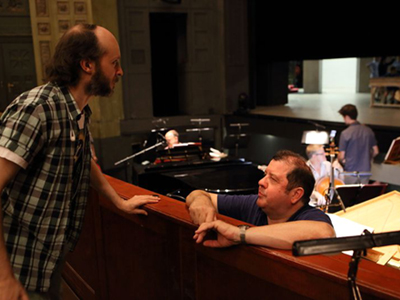
By ANDREW POWELL
Published: August 7, 2016
MUNICH — Two evenings after an “Allahu Akbar” eruption here cost nine mostly teenage, mostly Muslim, lives, it felt perverse to indulge in 280-year-old French escapism stretching to Turkey, Peru, Iran and the future United States.
But there we were July 24 in the Prinz-Regenten-Theater for Bavarian State Opera business-as-usual, a festival yet, and Rameau’s four-entrée Les Indes galantes as imagined by Sidi Larbi Cherkaoui, the Belgian choreographer with stage-director pretensions.
And safer we were, too, than at a smaller music festival 110 miles away near Nuremberg, the outdoor Ansbach Open, where a Syrian refugee denied asylum in this country was preparing to explode his metal-piece-filled backpack among two thousand listeners. (As luck would have it, Germany’s first suicide bomber killed only himself when he detonated only his detonator and did so outside the festival’s gates, not having known in advance he would need a ticket.)
Before departing for Turkey, the opéra-ballet states its premise by means of a prologue: European lovers pressed to exchange Goddess Hébé’s doux instants (sweet moments) for Goddess Bellone’s gloire des combats can count on intercession from a third god, Amour, as they “traverse the vastest seas” in military service.
This plays out with amusing dramatic variance* in the four locales to music of beguiling harmony and bold instrumental color, in airs, vocal ensembles, choruses and dances. The U.S. entrée concludes with the Dance of the Great Peace Pipe (penned after Agapit Chicagou’s 1725 Paris visit), minuets, a gavotte, and a most charming chaconne.
If you kept your eyes closed, the performance was a treat. Opening them invited confusion, or worse, despite Cherkaoui’s fresh dance moves, tirelessly executed by his Antwerp-based Compagnie Eastman.
Ivor Bolton and the Münchner Festspiel-Orchester, an elite Baroque pick-up band, served Rameau with verve and expressive breadth, ripe string sound and fabulous wind playing. The Balthasar-Neumann-Chor from Freiburg managed its musical challenges neatly, in opaque French.
The score’s 17 roles went to ten generally stylish soloists. Lisette Oropesa proved a graceful musician in the lyric soprano duties of Hébé and Zima. Anna Prohaska, as Phani and Fatime, stopped the show with a divinely phrased Viens, Hymen, viens m’unir. Light tenor Cyril Auvity sang artfully as Valère and Tacmas, while John Moore’s baritone lent a golden timbre to the sauvage Adario. Reveling grandly in the music’s depths were basses François Lis (Huascar and Alvar) and Tareq Nazmi (Osman and Ali).
But soprano Ana Quintans encountered pitch problems as Amour and Zaïre; Elsa Benoit, the Émilie, seemed squeezed by Rameau’s nimble turns; Mathias Vidal pushed harshly for volume in the tenor roles of Carlos and Damon; and bass Goran Jurić, in drag as Bellone, muddied her vital rousing words.
As for the staging, new on this night, conceit and a ruinous idea got the better of Cherkaoui (and BStO managers, who should have intervened if they care about Baroque opera as they profess): he would thread together the prologue and entrées into one dramatic unit. Characters would appear in each other’s sections, mute. Opéra-ballet form be damned.
In place of exotic lands (requiring exotic sets and costumes), the viewer would journey from schoolroom to museum gallery to church to flower shop, to no place, to some closed border crossing. The spectacle of Peru’s Adoration du Soleil, for instance, would unfold in the church. Woven throughout, clumsily, would be tastes of the plight of Europe’s present refugees, and Europeans’ poor hospitality. Count the ironies.
[*In Turkey a melodrama, as the shipwrecked lovers’ fate turns on Osman’s magnanimity (Le turc généreux). In Peru a tragedy, as the couple’s freedom results from Huascar’s molten-lava death (Les incas du Pérou). In Iran a bucolic, as two pairs of lovers ascertain their feelings through disguise and espial (Les fleurs, original version of Aug. 23, 1735). In the U.S. a comedy, as noble savage Zima flirts with and mocks two European colonists, reversing the pattern, before homing in on loving native Adario (Les sauvages).]
Photo © Wilfried Hösl
Related posts:
Portraits For a Theater
Nitrates In the Canapés
Harteros Warms to Tosca
Blacher Channels Maupassant
On Wenlock Edge with MPhil
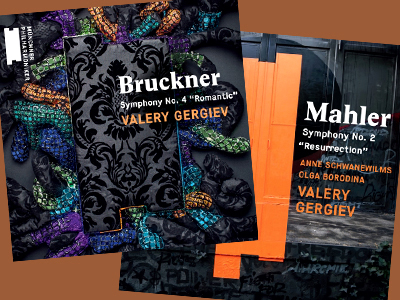
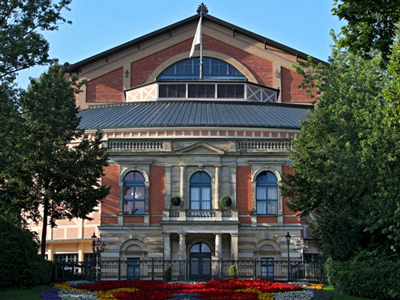
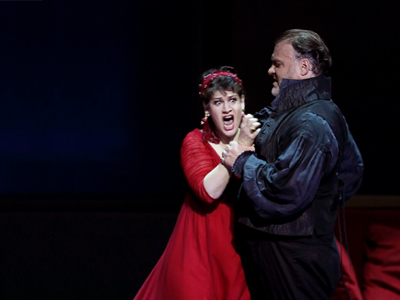
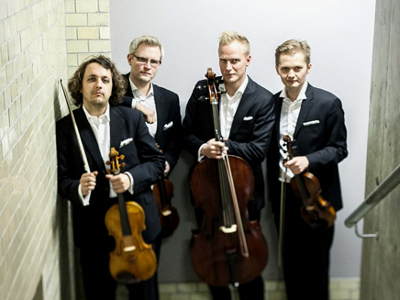
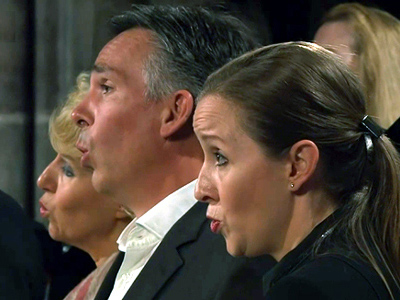
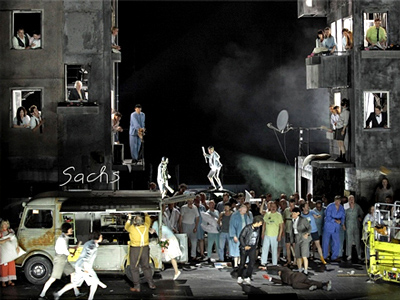
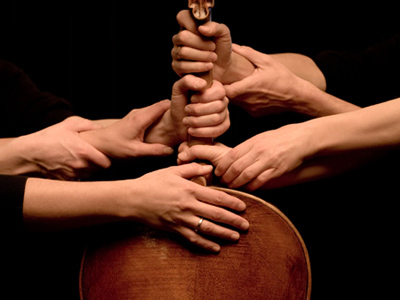
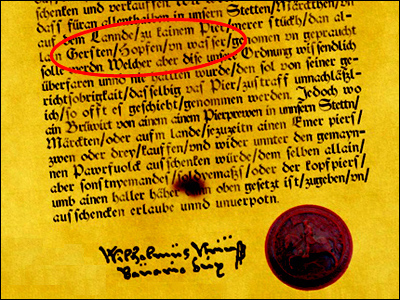
Petrenko Hosts Petrenko
Friday, April 22nd, 2016By ANDREW POWELL
Published: April 22, 2016
MUNICH — Vasily Petrenko’s debut at Bavarian State Opera this weekend prompts a glance at two Russian-born, modestly profiled conductors who have built distinct careers in Western Europe while sharing a last name. The guest from Liverpool will lead Boris Godunov, last revived two years ago by company Generalmusikdirektor Kirill Petrenko.
Inviting Vasily to work in Kirill’s house was sweet, ingenuous. After all, the two Petrenkos are what trademark attorneys call “confusingly similar” marks, a factor that doesn’t vanish just because real names are involved, or because it’s the arts. Are artists products? Their work is, notwithstanding the distance from commerce.
The Petrenkos are not of course the first conductor-brands to overlap, but unlike the Kleibers or Järvis, Abbados or Jurowskis, no disparity of talent or generation neatly separates them. Then, inescapably, there is the matter of dilution: a “Toscanini” needs no specifier.
As it happens, agents have promoted the Petrenkos as if with accidental care over geography. Although both men have enjoyed positive forays Stateside, awareness of them in Europe diverges. For a full decade, Vasily has been the “Petrenko” of reference in Britain. Kirill has been “Petrenko” in Germany.
Kirill has had such minimal renown in Britain, in fact, that retired Bavarian State Opera chief Peter Jonas last summer on Slipped Disc could report the following about the Bavarian State Orchestra’s upcoming European tour: “The [orchestra’s] committee and their management offered themselves to the [BBC] Proms for 2016 … and were sent away with the exclamation, ‘Oh no … . Kirill Petrenko? We do not really know about him over here.’ … The tour will happen all over Europe but without London.” Indeed it will.
In the meantime, Calisto Bieito’s staging of Boris Godunov gets a three-night revival April 23 to 29 with a strong cast: Sergei Skorokhodov’s pretender, Ain Anger’s chronicler and Alexander Tsymbalyuk’s riveting Boris. How will Vasily grapple with the (1869) score? Opera featured prominently in his career only at the start.
Echo Klassik Award
Placing the two Petrenkos side by side here, like baseball cards, meant compiling at least some personal facts along with the musical. So, three questions went to the conductors’ handlers. How tall is he? Where does he live (part of town)? What’s his favorite sports team?
This proved awkward, however, especially on one side, and hitherto-cordial staffers turned as cool as, well, trademark attorneys. Vasily’s people cooperated with partial answers. Kirill’s, deep inside Bavarian State Opera, stonewalled: “Mr. Petrenko generally does not wish to answer any personal questions.”
As it turned out, Vasily was on record with full answers over the years to all three questions for various media outlets. The man is an open book. This left Kirill’s side with unflattering holes. But the opera company’s hands were tied. Apparently under instructions from the artist, nobody could even confirm he lives in Munich (where he has drawn a paycheck for 30 months already). And he may not.
Bavarian State Opera: “What’s not to understand about ‘Mr. Petrenko does not wish to answer any personal questions’? Who puts out the rule that a conductor … does have to comprehend or be willing to be part of public relations? … So, in fact, we do not want to convey anything to anybody. This is the ‘line to be drawn’ from our side.”
Mention of Vasily went over badly. BStO: “What kind of idea is it anyways to compare two artists because they share the same last name?” Prepared descriptors accompanied the rhetoric: “ridiculous” and a “game.” How not to kill a story.
Shown the data for the above table, the opera company took to sarcasm: “Yes, sure, [inventing] height and weight [measurements] is of course totally acceptable.” But Kirill’s height had become public half a year ago* at ARD broadcaster Deutsche Welle. BStO did not either know this or wish to share the knowledge. Its hapless official scanning DW: “Oh, it’s on the Internet! It’s gotta be true!”
[*Earlier actually: Lucas Wiegelmann included it in an excellent 2014 discussion for Die Welt.]
Photos © Bayerische Staatsoper (Kirill Petrenko), Royal Liverpool Philharmonic (Vasily Petrenko)
Related posts:
Petrenko’s Sharper Boris
Portraits For a Theater
Bieito Hijacks Boris
Nazi Document Center Opens
Petrenko to Extend in Munich
Tags:Ain Anger, Alexander Tsymbalyuk, Bavarian State Opera, Bavarian State Orchestra, Bayerische Staatsoper, Bayerisches Staatsorchester, Boris Godunov, Commentary, Kirill Petrenko, München, Munich, Mussorgsky, News, Oslo Philharmonic, Royal Liverpool Philharmonic, Sergei Skorokhodov, Vasily Petrenko
Posted in Munich Times | Comments Closed
Blogs
Archives
Tags
Meta
Musical America Blogs is proudly powered by WordPress
Entries (RSS) and Comments (RSS).